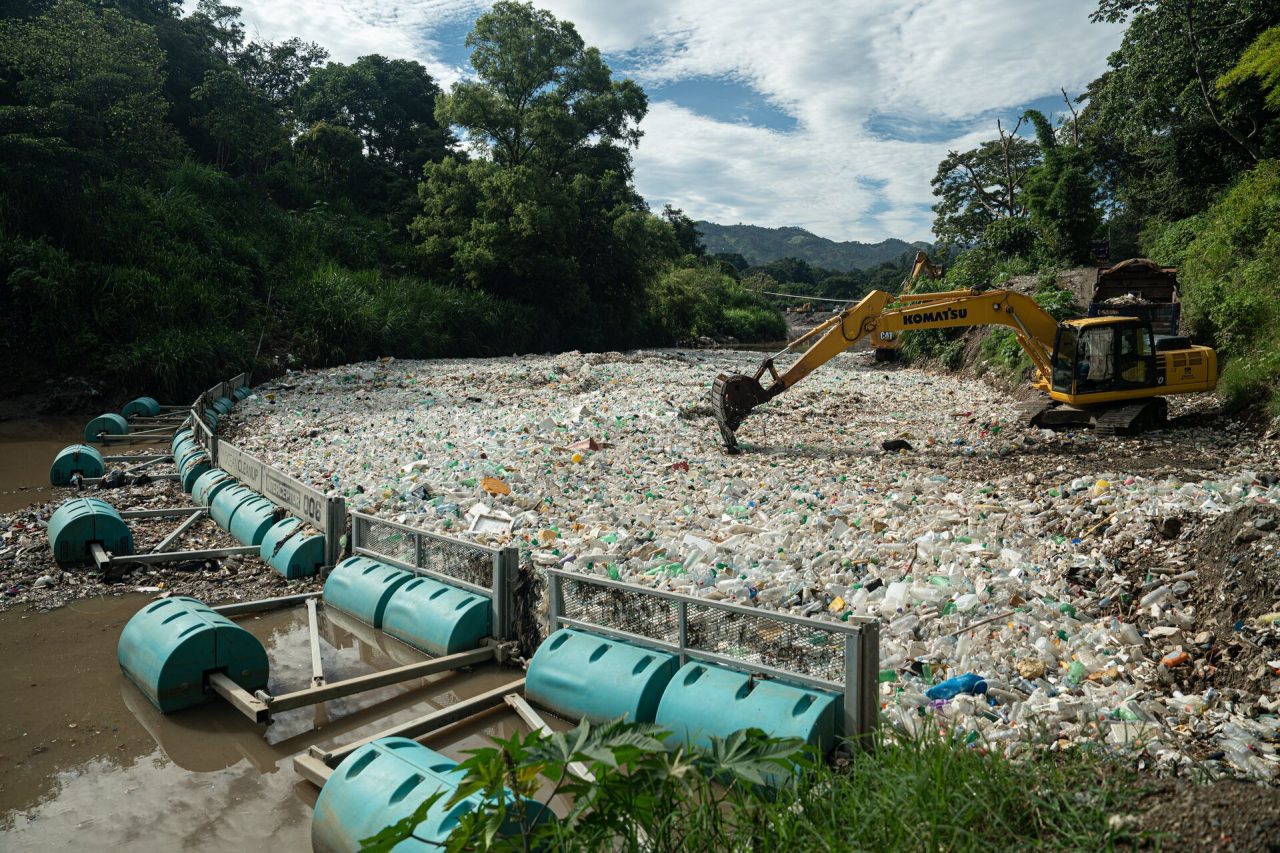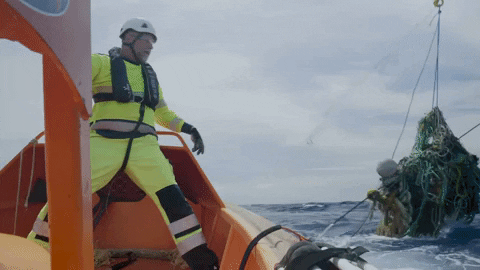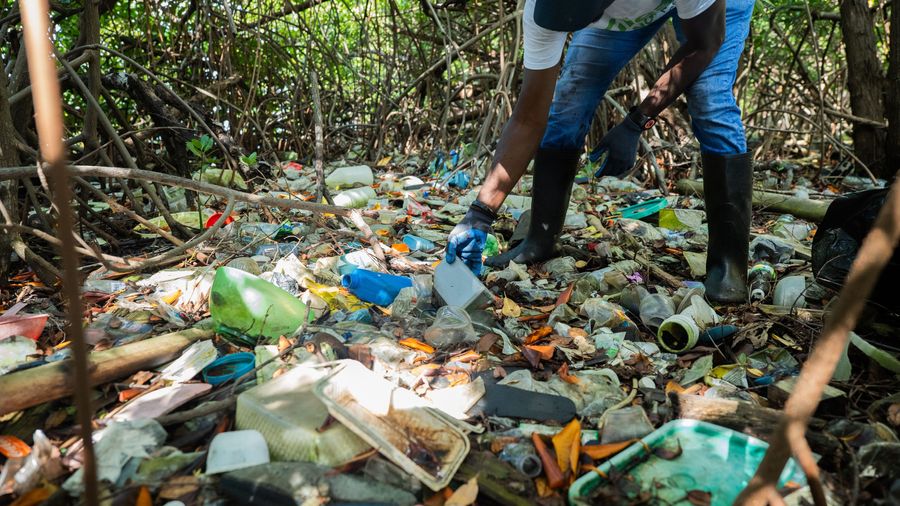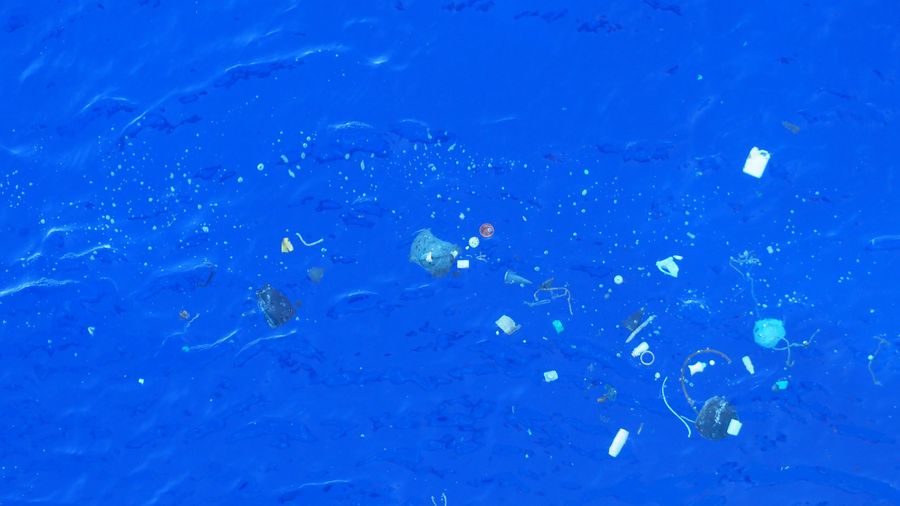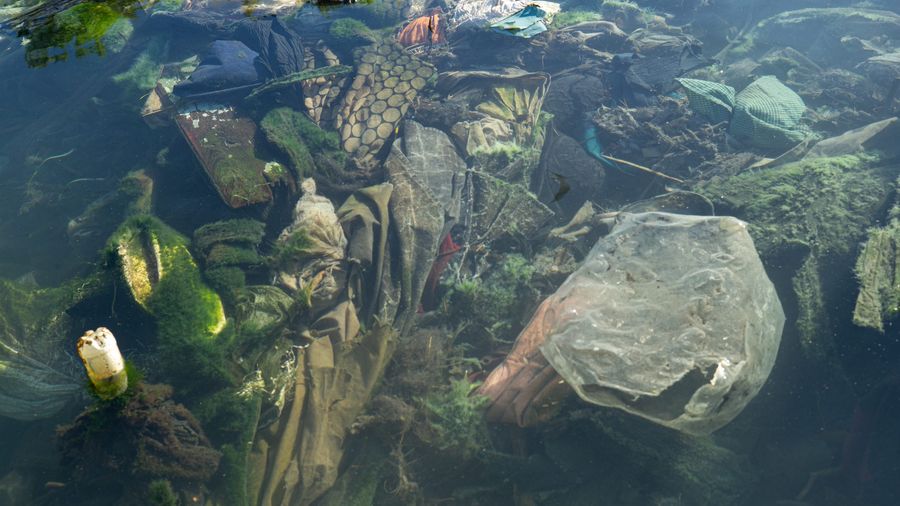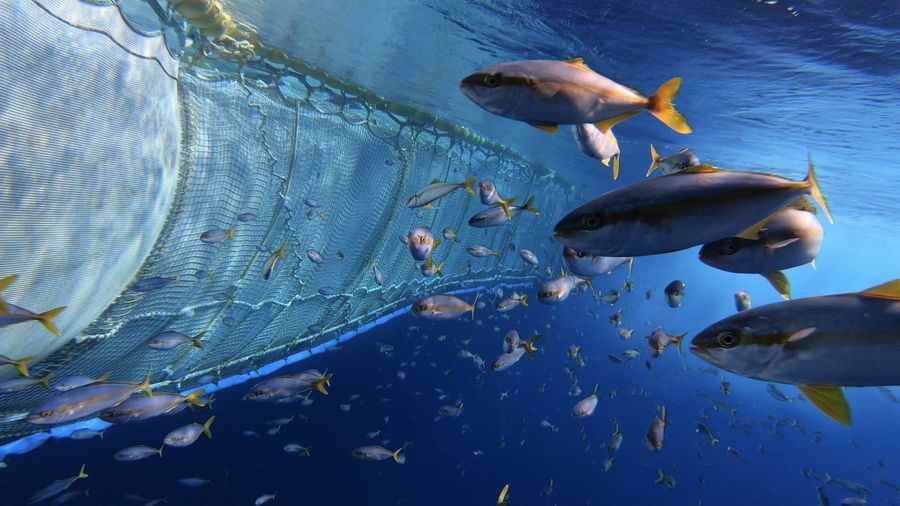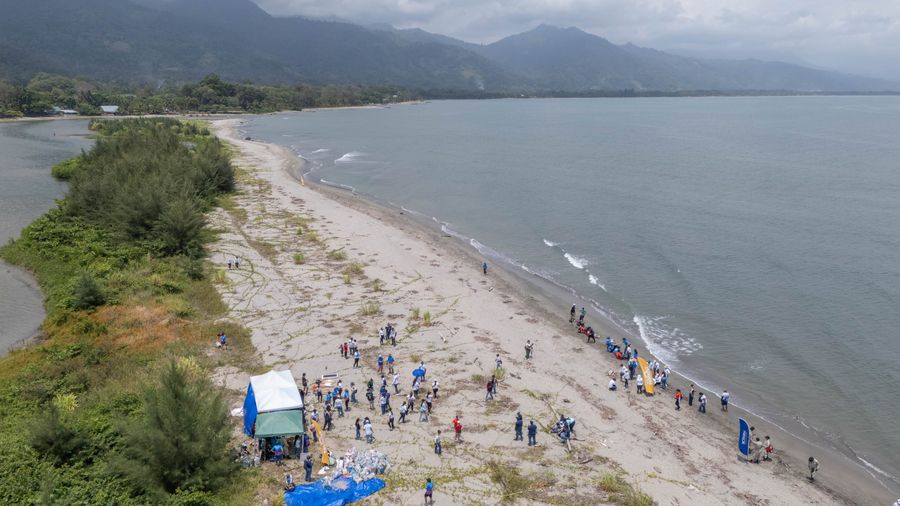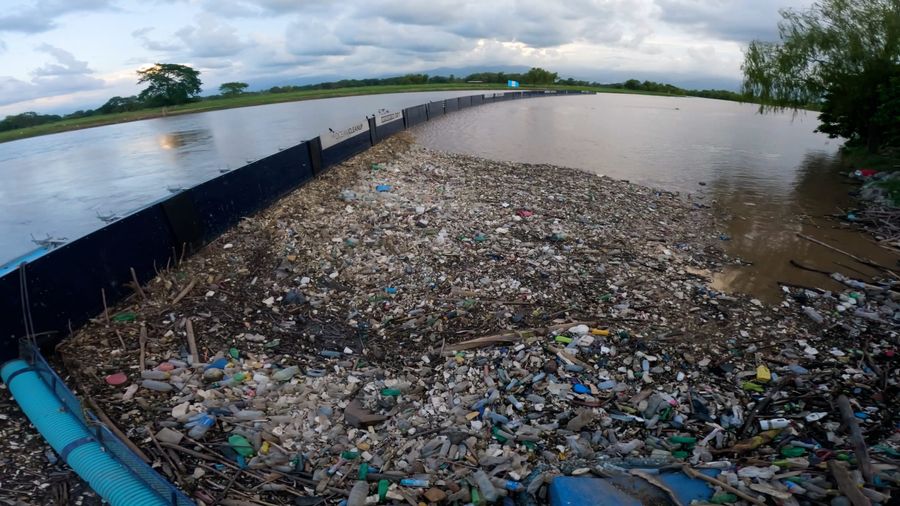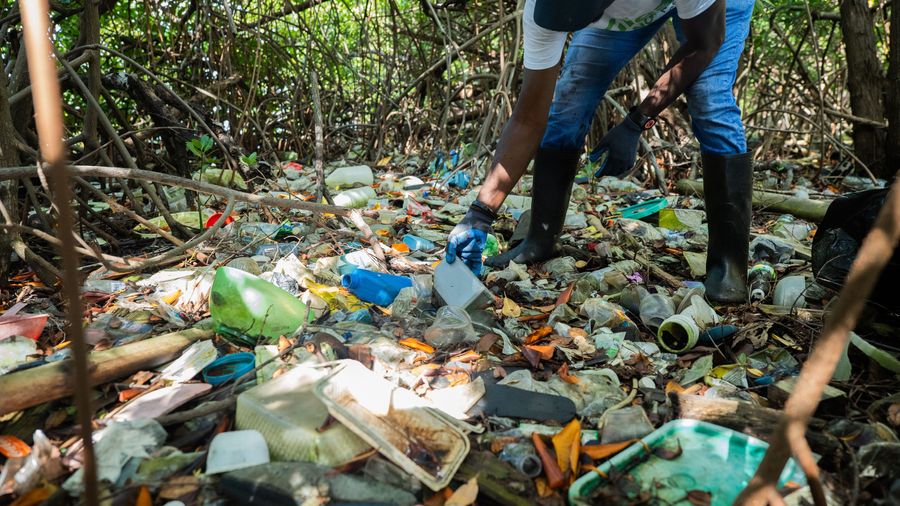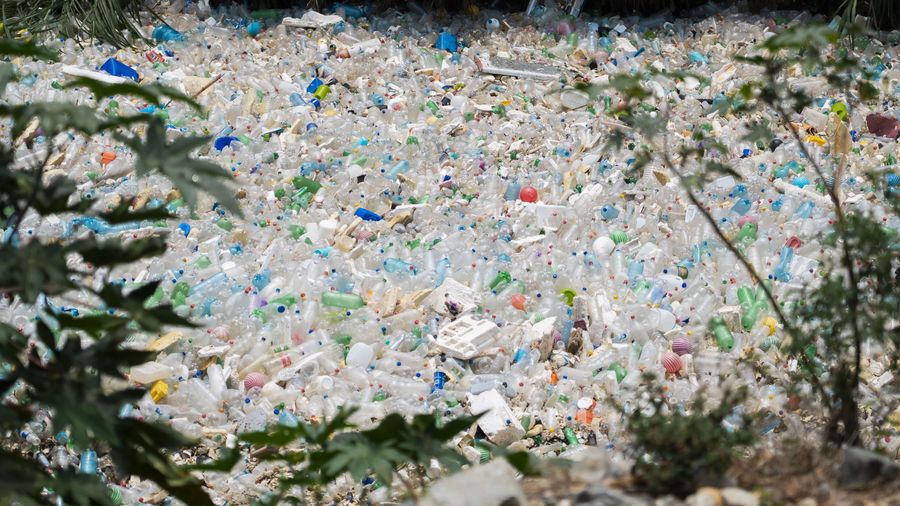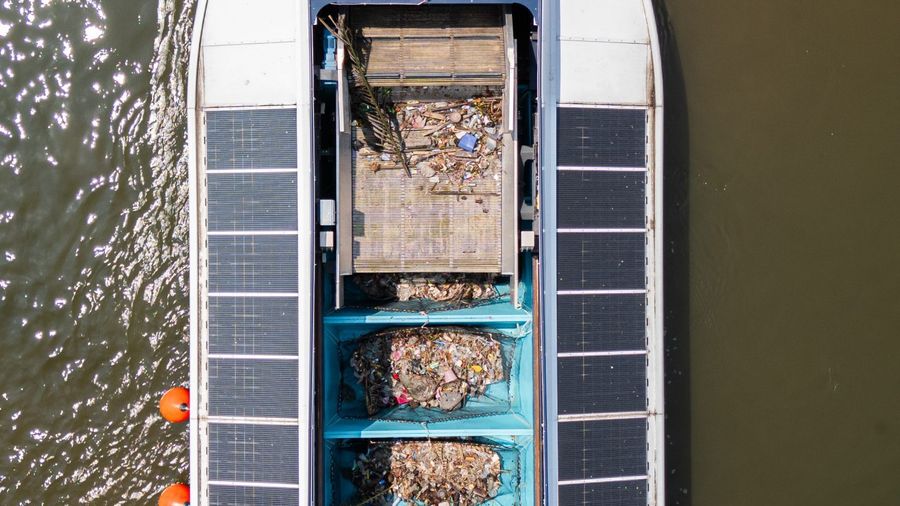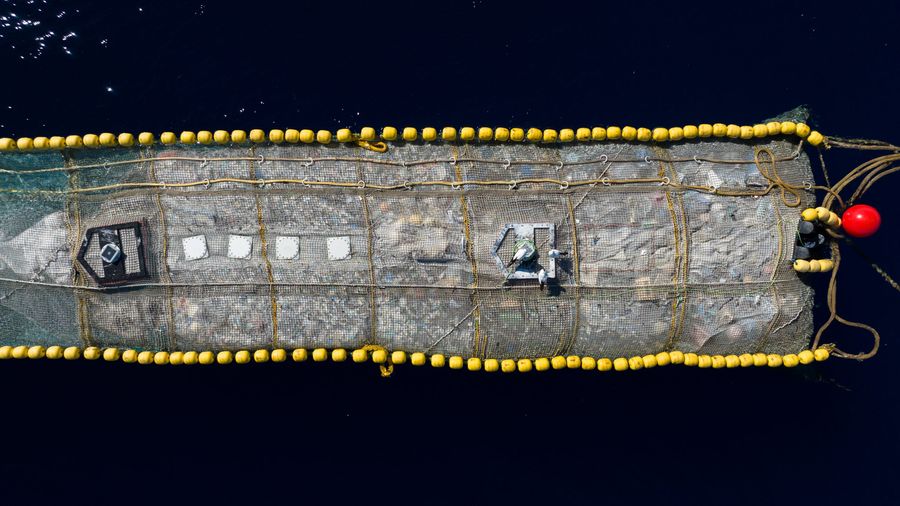
Protecting Coral Reefs from Plastic Pollution: The IUCN Congress as a Catalyst for Action and Collaboration
Back to updatesBy Janne van Eerten & Suleman Audu
This week, the International Union for the Conservation of Nature (IUCN) sees its’ World Conservation Congress kick off in Abu Dhabi. Once every four years, the global conservation community comes together to set the agenda for protecting nature’s most vital ecosystems. Maritime environments are top of mind thanks to the recent ratification of the High Seas Treaty (or BBNJ Agreement), and this Congress provides an opportunity to build on that momentum.
Global challenges require collaborative leadership. At The Ocean Cleanup, we’ve seen how local action can have a far-reaching impact and how partnerships across sectors and communities create more resilient solutions. Climate change and pollution are complex problems: they demand equally complex, coordinated responses.
A Mounting Threat to Coral Reefs
No ecosystem best illustrates the compounding impacts that climate change and pollution are having on oceans quite like coral reefs.
Hampered by higher ocean temperatures, rising acidification, and increasing frequency of severe storm events, coral reefs are struggling to adapt to the rapid changes in our climate. Likewise, the fish populations that rely on and maintain these vital ecosystems suffer from overfishing and the encroachment of urban developments. These threats tend to be front of mind when looking at potential conservation solutions, yet there is another pervasive issue lurking just below the surface: plastic.
Marine debris can cause not only physical and structural damage to reefs, but as macroplastics fragment into microplastics they act as vectors for disease and disrupt physiological regulation in fish and photosynthesis in corals. This makes the removal of existing macroplastics from the ocean as well as the reduction of additional plastic pollution from entering this ecosystem a major conservation concern.
Although major plastic inflows into the ocean are primarily in Southeast Asia and the Caribbean, their impact stretches beyond the communities and biodiversity in those areas. Recent research found anthropogenic debris, primarily made up of plastic, on 77 out of 84 reefs surveyed in the Pacific, Indian, and Atlantic Ocean basins – including remote and uninhabited central Pacific atolls.
For local communities whose livelihoods rely on a healthy ocean, there is a need for concerted global action on plastic pollution, as Antigua & Barbuda Prime Minister Gaston Browne noted during his address to the United Nations General Assembly in September “For islands like mine, the ocean is not scenery; it is the source of food and jobs, and the opportunity for new chances of growth and development. But it must be protected.”
Technology & Collaboration for Change
Plastic pollution is a symptom of a deeper systemic problem. This is why, in addition to our ocean and river-based operations, where we actively remove plastic from the environment, we are developing innovative artificial intelligence (AI) tools to effectively identify, monitor, analyze and map pollution in our rivers and oceans. These insights improve our own technology and give communities and governments the data they need to act.
This approach underpins our 30 Cities Program, which targets the most polluted waterways worldwide. Some of this data is used to identify plastic hotspots in beaches, gullies, mangroves, seagrass meadows, and coral reefs, which will be targeted by coastal sweeps carried out alongside local communities.
However, this data can be used for other purposes too.
Combined with AI and remote sensing technologies, this data can contribute to marine biodiversity monitoring, coral reef conservation and protection from transboundary plastic pollution in the Gulf of Honduras, home to the world’s second-largest reef system, the Mesoamerican Barrier Reef System, and Coral Triangle regions.
These regions, which are some of our world’s largest biodiversity hotspots, are also near major sources of plastic pollution. In Guatemala, up to 20,000 tonnes of plastic flow through the Rio Motagua into the Caribbean Sea every year, while the Chao Praya disburses about 4,000 tonnes into the Gulf of Thailand. Of the 3 million rivers scattered across the planet, roughly 1000 are responsible for a majority of plastic emissions into the ocean.
So far, we have removed over 40 million kilograms of waste from rivers and the Great Pacific Garbage Patch. While not an inconsequential amount, this represents a fraction of what is needed for us to reach our goal of removing 90% of all floating plastic in the ocean. Success depends on broad partnerships, shared data, and collective action.
World Conservation Congress
The ocean transcends national boundaries, and efforts to protect it should do so too. This Congress provides a platform for scientists, civil society, and policymakers to develop impactful solutions to some of the world’s most complex challenges – and The Ocean Cleanup is keen to learn and contribute. Our side session: “Conservation and Protection of Coral Reefs from Transboundary Plastic Pollution Using Advanced Monitoring Technologies” will feature insights from the Coral Triangle Initiative, IUCN, and The Ocean Cleanup. This session will showcase real-world case studies from the Mesoamerican Barrier Reef System and Coral Triangle Region, demonstrating how innovative monitoring solutions and community partnerships are turning the tide against plastic pollution.
